#I combine two conflicting sidequests into one in this chapter
Explore tagged Tumblr posts
Text
After much editing, the third chapter of "Londerland Bloodlines: Downtown Queensland" is up! Featuring Alice snatching a certain briefcase for Fat Larry; murdering a certain Russian mafia boss for Venus Dare; and questioning a certain homeless fellow to get more information on those plaguebearers. Plus dealing with everyone's favorite annoying ghoul Patty along the way. This one's a bit of a doozy -- I recommend you pace yourself!
#londerland bloodlines#fanfic#ao3#archive of our own#alice liddell#malkavian#tw: death#tw: blood#tw: disease#less plaguebearer stuff in this one but we do have plenty of people getting shot and such#and one guy dying of the disease at the end so#poor Tin Can Bill :(#but yes have a chapter that serves as an extensive walkthrough for the Fat Larry and Venus sidequests :p#...well sort of#I combine two conflicting sidequests into one in this chapter#because I can#also this chapter has one of my favorite bits in it#namely Alice suddenly recalling an important fact about the American drinking age at a certain point XD#you'll see when you get there#but yes this is one of my longer chapters#46 pages in LibreOffice Writer ooof#you DEFINITELY want to take your time here#oh and ignore the fact that it says I updated on October 11th#that's when I DRAFTED the chapter and started the final editing pass#yes it took me that long to get through it#hence why I'm telling readers to pace themselves
6 notes
·
View notes
Text
Top 9 Games Played in 2020: Number 1: Bug Fables

Rising from the ashes of the once-great Paper Mario series comes a game I never expected.
A beautiful little game called Bug Fables.
Where It Excels
Bug Fables is thoroughly inspired by the first two Paper Mario games, and it shows. It uses a similar battle system, a Medal system similar to Badges, and even similar paper-like aesthetics. It would be easy to just say "wow, what a ripoff" and brush it aside.
But this is not a copy-paste of Paper Mario. This is clearly designed with love for those games, and for the people who enjoyed them. This is a game that says "yes Paper Mario was good, but how could it be improved?"
So let's talk about what it does differently (and arguably better) instead.
The story does not have the history of the Mario series to build on, so Bug Fables relies on having to be an interesting self-contained world. It does a good job providing lore as you move forward through the early story, and you can find optional Lore Books that give background into things like why some bugs evolved into intelligent beings, and the past conflicts between different groups. As someone who does not like most bugs in-person, they did a good job getting me invested. The tone is often lighthearted, but able to become serious when needed. The world feels more grounded than Mario, so there's a greater sense of danger during darker plot points.
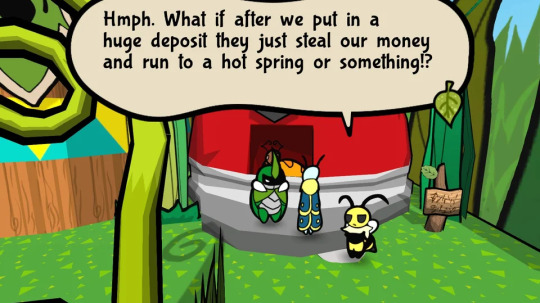
I loved all three main characters (Kabbu the Beetle, Vi the Bee, and Leif the Moth) by the end, though some take longer to become interesting than others. Each of them feels well fleshed out, and get at least one important backstory sidequest.
And while it initially appears to follow the Paper Mario structure of "find the special items in episodic adventures, then go fight the final boss", it actually feels more like a traditional RPG because the story evolves over time.
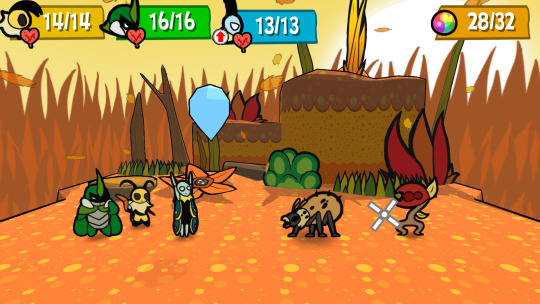
In battle, you have three full party members. Each of them have their own HP and specials, and can equip individual Medals. You can change the formation of battle to decide who is in the front (more damage but more aggro) or back (less aggro but normal damage). Importantly you can also pass a turn to another party member, which depending on the enemies and formations may be your best option. For example if you have a bunch of flying enemies, you can just pass an extra turn to Vi so she can continue grounding them. There are certain enemy types that can only be reached by certain character's regular attacks, but you can often use a Special to overcome a lack of reach at the cost of SP. There are even combination attacks that take multiple characters' turns in order to deliver especially devastating specials.Each attack and special also have a unique action command that lets you make them better with good button inputs.
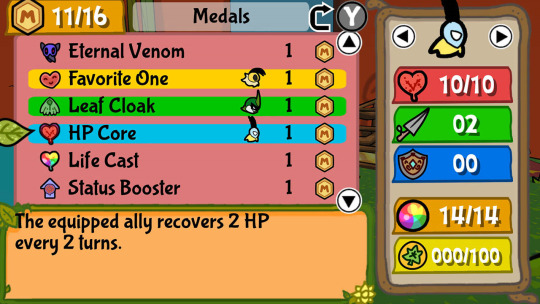
Medals are your equipment replacement, and can give you new active or passive abilities, or just raise your stats. However unlike Paper Mario, most the especially powerful Medals (like boosting your attack) are offset with a weakness (lowering your defense). This means you need more strategy than "I'll just equip this attack-boosting Medal." I'd argue there's less active ability Medals in Bug Fables than Paper Mario, but the greater strategy to the passive abilities makes up for it. There’s even strange setups like giving yourself poison but having +1 defense.
There are two EXTREMELY important Medals that Bug Fables copies from Paper Mario, but in a better way. One immediately defeats weak enemies on the field when you touch them. The other prevents enemies from getting a first strike on you. And Bug Fables gives you both of these extremely early with low MP cost. These make backtracking significantly less frustrating. The backtracking was one of the worse parts of the Paper Mario games, so I appreciate this. You also still get a fast movement option after a few chapters.
Quests are very well organized. You'll find a quest board in every town, and can take as many quests at once as you want. There's a quest log in your menu to keep track of them, and it updates as you go through steps of multi-step ones. And often a quest-important NPC will have an exclamation over their head to make them easier to spot. A lot of them have fun interactions and situations, so they’re definitely worth doing. Only one is a particularly long fetch quest with item trading, but it feels like a purposeful parody.
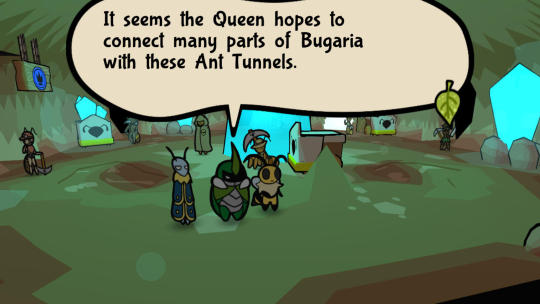
A lot of strengths in this game come from convenience. For example, you can fast travel between towns almost as soon as you unlock a new town. And you have two-item cooking unlocked from very early-game. These were things that felt unnecessarily gated in Paper Mario. Every party member can also scan the enemy to get stats and provide some information, whereas Paper Mario restricted it to one partner. As a bonus, this means you get three unique pieces of dialogue for every enemy depending on who you have initiate the scan.
Dungeons and their puzzles feel much more involved. There is less emphasis on platforming, and more on using your characters abilities like creating ice blocks. It's a step closer to a Zelda dungeon, which is appreciated. Save stones are well-paced enough to not make exploring feel to daunting either.
In terms of design and sound, it's strong for an indie title. They can't quite compare to a big publisher like Nintendo, but the world and characters look pretty good. And there's at least a few songs I still have stuck in my head.
The game also feels much harder than Paper Mario, which is good because I felt those games were too easy. It can be rough early on when you're learning, but fun once you get the hang of it. The game never gets to a point where you just steamroll everything either, so you'll have to continue paying attention for the whole game. I know some people like to overpower enemies, but I think that gets boring.
Where It Falls Short
While I don't like steamrolling enemies, I do like a sense of progression. And Bug Fables has that in many forms, like levels, and field abilities.
But at no point in the story do your standard attacks do more damage. Paper Mario would give you upgraded boots and hammers and you progress for more damage, but you'll keep hitting for your normal 2 damage here outside of Medals or an optional expensive upgrade. I know that in-universe it may have been weird to explain why Kabbu's horn is suddenly stronger, but they managed to give reasons for Vi not to fly despite being a bee for a long time.
There's also a dungeon puzzle near the end of the game that I found annoying. The solution to one section was actually to defeat a particular enemy. Given I was avoiding enemies at this point looking for a puzzle solution, this took longer than I'd like to admit.

You can also optionally get a fourth sort-of-party member, which I only learned about by accident when looking up Medal strategies. However it is not from an official sidequest that appears on the board, and I honestly missed any hints towards it. I was expecting them to show up in the late-game, but as I was getting ready for the final chapter I still didn't have them. Only when I specifically looked up what to do was I able to find them. I don't mind optional party members, but you need a little more guidance than what Bug Fables provided.
My final complaint may be strange, but...the game does not have a cliffhanger ending. It's a self-contained story that resolves everything important. Which means I don't think they can easily get another game out of this. But I'd love to see another similar game by this team.
Maybe if they do a time-skip and follow a different set of characters, it could potentially work.
Final Thoughts
Bug Fables is yet another indie title that proves you don't need to be a big studio to make an incredible game.
If you like classic Paper Mario, or just fun RPGs, I highly recommend giving it a shot.
10 notes
·
View notes
Text
Favourite Games of 2019
I don’t like making ranked lists anymore. So here’s a bunch of games old and new I played in 2019 because I was busy catching up due to not playing FFXIV as much as in previous years.
Ciconia When They Cry Phase 1: For You, The Replaceable Ones
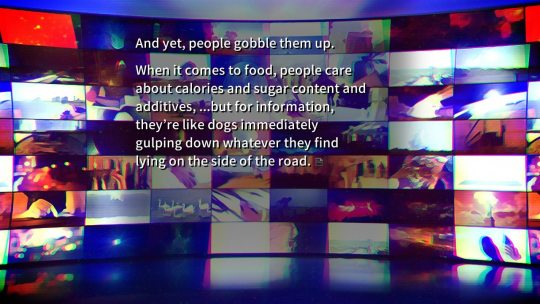
I think going in, and even starting to play it, I felt like maybe the game would abandon the WTC mystery game conventions. It ended up not doing that, because the game leaves you with far more questions than answers at the end. The A3W World (“after World War III”) is still trying to deal with political issues and social issues that existed prior to World War III. A global stalemate exists due to the military implementation of the Gauntlet weapon. Eventually things happen where different countries need to deal with a shortage of resources, territorial conflicts, etc which sets off a chain reaction to World War IV. However, the children who grew up in the A3W era, settled into new ideologies and views of how society currently works are at odds with what the older generation wants and requires of them. Along the way, they need to deal with other groups and conspiracies in order to maintain the Walls of Peace.
So in essence, R07 still crafts a mystery for readers to figure out, but it isn’t a murder mystery. It’s an international conspiracy mystery and I am more than okay with that. I think this chapter required a lot of worldbuilding to set that kind of story up and coming out of Phase 1, I understood why the first chapter wasn’t exactly like Umineko’s. I thought that it was handled well, despite some of the purple prose (but if you’ve played a R07 game before, you’re likely used to it). I also thought he really tried to introduce and incorporate themes including gender, generational differences, societal tiers, geopolitics disguised as sports events (possibly mirroring the 2020 Olympics in Japan), etc. as well as he could throughout the story through the game’s cast. Even if the game meanders a bit (and it definitely feels that way towards the start), when it actually starts to roll, I felt compelled to keep reading.
And truly, the game has an incredibly large cast of characters. The TIPS section handles introductions well, and while some cast members don’t have as much time in the spotlight as others, I can see them getting their time eventually in subsequent chapters. Clearly Phase 1 exists to focus more on the children from the Arctic Ocean Union (the “AOU”) as evidenced by the additional stories unlocked at the end of the game so hopefully other chapters have the same amount of character backstory for the other factions. I also genuinely enjoyed that the big international cast of characters allowed for many different types of designs with characters with different types of hairstyles and hair texture or characters wearing hijabs and still managed to make them retain adorableness or a sense of style. I do not recall seeing it as often in Japanese media and I’m very happy to see it here.
I think Ciconia Phase 1 is a very good start to this subseries’ planned four episodes and I hope to see more sociopolitical commentary. It feels as though R07 looked at everything happening in Japan and social media/how news is consumed and decided to write a four-part SFF series about it. I’m eagerly looking forward to the next chapter.
Bloodstained: Ritual of the Night
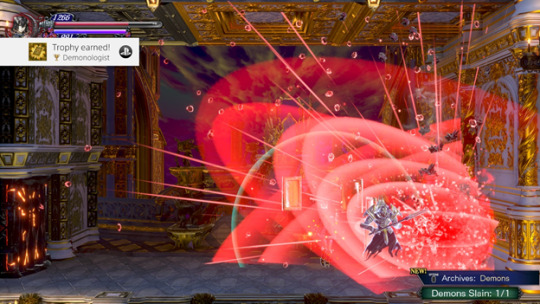
I backed Bloodstained when it got put on Kickstarter a few years ago. It was shipped to me at… possibly the worst time since Shadowbringers was coming out very shortly after. My fiancé and I played ours for a short bit, felt very positive about the game, then dropped it to play Shadowbringers. We didn’t return to it until maybe September/October? Both of us ended up getting our Platinum Trophies for it so we both played through everything the game had to offer.
Bloodstained is a good experience, but not without its issues. I played on PS4 and I’ve had a few outright crashes or some glitching into walls early enough that I couldn’t come out of them again due to not having the required skill to try to get out of it. I also felt like the game meandered or had a bit of padding in its earlier stages). Later on, you realise you have to put in the farming work to have a better and faster time not unlike its Igavania counterparts, but I did feel like the drop rates prior to actually working towards higher luck stats/drop shards were low enough almost to the point of unfair or deliberately wasting my time. I also felt as though there were too many weapon types; with adequate shard use and shard grinding eventually you can settle into one weapon type that suits your playstyle or eventually use the gun for everything when you get the special hat quest reward).
However, I’m speaking about this game as someone who platinumed it which requires a lot of farming and synthesis. As a player going through the main campaign, I think the maps are adequate. The backgrounds are very lovingly crafted, and the music is absolutely one of the best of the year. Boss design is also fun and rewarding, requiring the player to learn how all the different weapon types work, adequate backstepping and closing in, and boss patterns. If you suck, the game will show you that you suck very quickly and deliberately. Essentially towards the end, I felt as though Bloodstained tried very hard to cater to fans of the metroidvania style of game, and the classicvania style of game. I personally don’t think it completely succeeded but for a first time experience of trying to combine the two into one, it did its job with preparation for another game.
I also feel like some criticism was lobbed towards the game’s narrative for being told in library/book entries, and while I understand that (I actually couldn’t open all of the books for fear of my game crashing), I don’t think elaborate cutscenes and continuous dialogue would work well with this game’s flow. Bloodstained prioritizes gameplay elements and player exploration over anything else, and to be honest, I’d rather it happen that way than with long elaborate cutscenes. I also felt as though I got more out of the game because I’d played the 8-bit prequel as well.
Overall, Bloodstained is a passable experience. I’m glad I played it, and I’m glad I put the work in to try to make the game a better experience. I got what I wanted out of the game for as much as I backed it and I hope they try again with a similar formula because this is a very good first step.
The Touryst
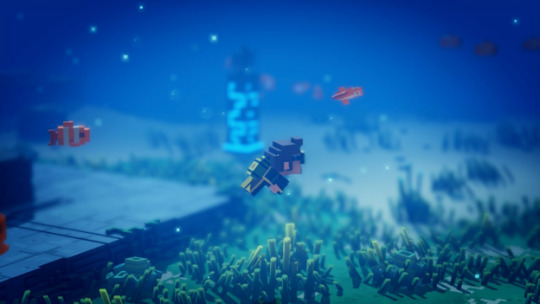
Sometimes when I see a game with voxel graphics, I feel pretty compelled to pick it up because it looks so darn lovingly rendered and it usually ends up being fun. The Touryst does a good job with its graphical style and visiting new islands is a complete delight because of it. It looks like a game with style, and performs super-well on the Switch. It’s also one of the freshest games I’ve played in a while.
Basically you’re playing a blocky dude with a moustache who just wants to have a good time but when he gets to TOWA Monument, he’s told he has to find monument cores to unlock the world’s secrets. And then you can do whatever you want. The different islands have their own little personalities: there’s an island called Fijy which is volcanic, there’s Ybiza with a bunch of dudes chilling on the beach and passed out on their chairs, there’s Santoryn which is just Greece, and a few other places that are essentially recreations of real-world places.
As you explore, there’s a lot of stuff to do. A variety of things to do. There are puzzles and mechanics that don’t necessarily overstay their welcome, you can play footy, you can play spelunker, you can take helicopter rides, you can take pictures, get stuff for a museum, surf, play rhythm games…. It’s your vacation, do what you want. It’s a little like Vegas. Unlike Vegas, you can use your ever-increasing money and diamonds to get new moves for your moustached character to reach new objects.
As a little game where you can do whatever you want little by little, and makes for a smooth experience, I’m glad I picked up the Touryst after asking another person what they thought of it. It has great puzzles, lots of stuff to do and explore and see, and ton of minigames for whatever mood you feel like you’re in. The game is fairly short, but I’m very glad the holiday doesn’t overstay its welcome.
A Short Hike
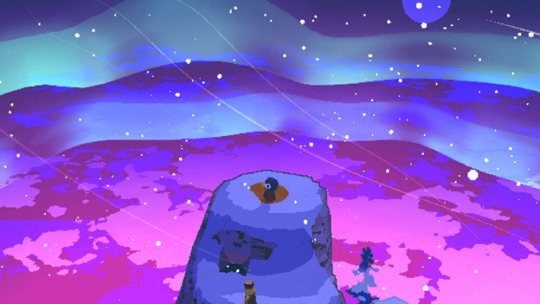
A Short Hike places you in the shoes of a bird who is utterly determined to walk to the top of Hawk Peak to get signal for her phone. I totally understand; sometimes you’ve gotta do what you gotta do.
But the game allows you to undertake that journey however you want to. You can go right away and finish up and get that darn signal. Or you can take your time and we’ll build that bridge when we get there. There are different types of terrains to explore if you opt to take the scenic route… and it’s rewarding to do so. You can find treasure, you can water a flower, you can talk to the Animal Crossing-esque characters to do some sidequests, you can do whatever you want.
I’m sorry to say that when the game introduced fishing, I spent a lot of my time doing that. Fishing ruins me. The completionist in me wanted to fish. But the whole thing is that you don’t have to do any of this. If you want to finish the game, you can absolutely positively focus on that and the game doesn’t pressure you for it.
And that’s one of the things I like about it. It’s just whatever about the whole ordeal. I don’t feel like I’m completely and utterly missing out if I don’t decide to do something. Even the task of getting Golden Feathers to progress is fine since you only need eight for it, and the game easily gives you enough rewards to get four or five before sidequests or exploration is factored in.
Sometimes you just need to take a walk and kind of think of nothing just to clear your head. And A Short Hike accomplishes that very well.
Worldend Syndrome
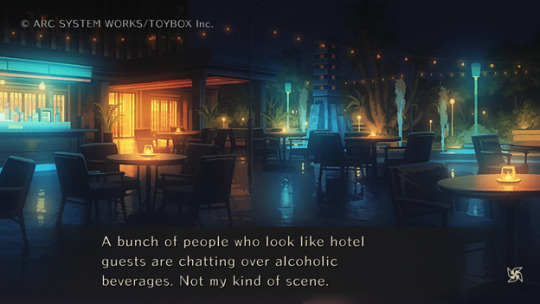
In my effort to try to find other games to play in 2019 because I’d fallen a little out of love with FFXIV, I realised that taking baby steps with visual novels and bite-sized games would be the best idea to try to get back into traditional games (particularly since I was, and am, still questioning whether I like games as a hobby or not). On a whim, I decided to download a boatload of visual novel demos one night and tried a bunch of them out. Worldend Syndrome’s demo didn’t exactly grab me until perhaps halfway through the demo when I a) realised that this demo was long af, and b) nothing appeared what it had seemed as I kept going through it and the characters were enjoyable.
So I decided to get the game and dragged my fiancé along for the ride. It’s one of those standard decision-making/pick which girl you want and go down her route VNs but it didn’t really feel skeezy or ecchi other than one particular point in each girl’s story where you get confessed to. You go through the VN as an unnamed protagonist who is visiting his cousin over the summer, and you and your friends get dragged into a school club whose focus revolves around folklore. The town the protagonist finds himself in is haunted by the Yomibito, spirits of the undead who look exactly like regular people but are eventually driven mad enough to kill.
One of the things that drew me to this visual novel was its assortment of animated backgrounds. They colourful and gorgeous. Every CG looks nice and coloured well, and the backgrounds for each area you visit are so beautiful and makes every single location easy to settle into. The cast is also surprisingly decent, where I expected to hate a few people but I ended up being okay with them because they were written well and weren’t as tropey as I had expected. I was also very pleased that the character that you were roleplaying as wasn’t skeezy when put into situations where he could have been, and that he treated the girls very well (though I won’t deny that there are some spots where behaviour was questionable but it doesn’t happen as often). Because the characters were written adequately enough, the game’s true ending route comes together very well and very naturally to a point where I could seriously believe that every character got along with one another to make sure the emotional impact of the mystery was satisfying.
In order to finish Worldend Syndrome, you have to do each route. A few characters’ routes don’t get unlocked until halfway through the game or even until the very end. The game also remembers everything you’ve done when it autosaves the system data on the world map, so if you need to reload a save to figure out someone’s schedule or if you mess up, it’s relatively easy to come back to something you’ve missed. I’ve played a lot of multiple route VNs before and Worldend Syndrome is easily one of the better VNs that allows the player to skip through to something they’ve missed or skip through previously-viewed text for another route.
As it is, Worldend Syndrome doesn’t really try to do anything spectacular, nor does it try to stand out like other visual novels of 2019 have (ie: Ciconia, presumably AI but I only tried the demo and I hated parts of the script, sorry). It does its job and tells its story which has a very good payoff in the end.
Judgement
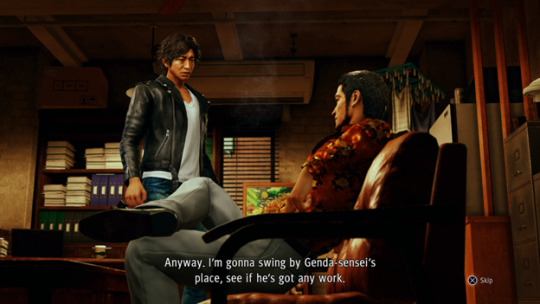
I bought my fiancé Judgement earlier this year, as I had retired from playing Ryu ga Gotoku after Dead Souls/Ishin, and he was still playing the series religiously. I watched him play through part of it and I felt compelled to get my own copy because the combat looked nice, and the characters were compelling enough that I felt comfortable picking it up.
Judgement follows former lawyer Takayuki Yagami who is now a detective. His tale is one of redemption and conspiracies, reminiscent of some Phoenix Wright games (which this game gives clever nods to when the protagonist is in the courtroom). Yagami is more serious and down-to-earth than Kiryu is so the tone of the game feels quite different than other RGG games (or at least the ones I’ve played).
It still feels like a regular RGG game where you’re still wandering through Kamurocho, you’re still getting into fights with randos and Yakuza dudes, you date girls, you go to buy food, you play minigames, etc. But it isn’t as big as a standard RGG game; because you stay only in the one area, the cast is smaller, you get a job board to get your sidequests from, and the story itself is fairly short and sweet. I actually prefer that as a lapsed RGG player since it’s easier to get back into the games this way.
Judgement, however, disappointed me just a little in how little you spend in the courtroom. You’re given opportunities to present evidence, do some suspect tailing, use your smartphone to catch a cheating husband, or use a drone to search for evidence. I felt like when you had to use the drone to search for evidence, it ruined the pacing a little. The tailing missions are also reminiscent of Assassin’s Creed, and no that isn’t a good thing! Due to this, I felt like Judgement was not necessarily a great detective game but it did a decent job of trying to mold the RGG experience to a different main character.
Yagami can… fight… for some reason so he can beat up whatever randos come up to him on the streets. He’s actually more acrobatic than I remember Kiryu being in previous RGG games. He can kick off objects, he’s hard to back into a corner, he can do wall-flips, etc. It’s also much easier to earn XP where it’s all in one bar so you can do whatever you want to fill it up like play darts and just put stuff into his lockpicking. As a lapsed fan, the streamlining feels okay. The streamlining for combat also feels good because if you fights go on too long, the popo can come for you and you’d get fined, so emphasis is on finishing fights cleanly and quickly.
Overall, as a lapsed RGG fan, the way Judgement looks and feels and wraps up its twists and turns was really exciting for me. It may not have as many things to do as other RGG games, but honestly I think being a leaner experience was better and thus didn’t make the game overstay its welcome. I also am eagerly awaiting RGG7 since I enjoyed the demo a lot and I think the new protagonist can carry the series the way Yagami carried Judgement.
Cadence of Hyrule
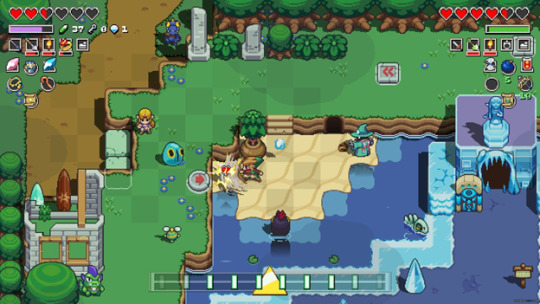
Sometimes, after my fiancé and I bought our Switch, I’d wake up, go brush my teeth, and return to bed just to see my fiancé awake and playing Cadence of Hyrule. I was perplexed as it’s been ages since he’d willingly played a Zelda game, and his hands are super-huge for the joycons so he doesn’t like using them much.
You can easily say that Cadence of Hyrule is just a Crypt of the Necrodancer reskin with Zelda stuff all over it, but feels pretty clever in that it uses stuff from roguelikes and a rhythm game and makes the A Link to the Past world feel incredibly fresh. Bosses, especially, feel very fresh. Enemies move according to the rhythm and have a unique pattern that’s easily memorized so you can fall into the rhythm and take advantage of. If you’ve played Necrodancer, you’ll probably feel at home in this aspect, especially since the maps are also randomised (which leads different playthroughs feeling fresh).
The Zelda feels comes from recreating tunes from older Zelda games in puzzles, the magnificent sprite art, the great Zelda remixes, a simple-enough story, and a standard set of things to find in each procedurally generated dungeon. You also find a variety of traditional items like the bow, the bombs, boomerang… and a spear? It’s a nice blend of Zelda and Necrodancer.
The caveat is that it takes a little getting used to, since you’re not exactly used to not being able to freely move in a Zelda game. But when you do get used to it, it feels good. Everything is pretty expendable and if you die, you don’t feel like you necessarily lose a lot since you can accrue it all easily enough again. It’s unpredictable and that random roguelike nature is something that makes the Zelda experience feel fresh.
Spirit Hunter: Death Mark
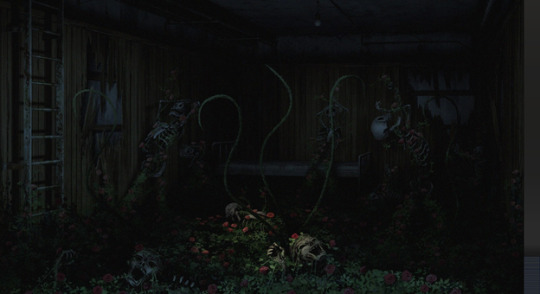
My fiancé and I were trying to find spooky games to play for Halloween that wouldn’t make me squeamish because despite my profession dealing with analysis of body parts and human body fluids, I can’t see that kind of stuff on TV or in games in a realistic sense. It grosses me out. At least when it’s in front of me, it’s already out and off someone’s body and in a fume hood/biosafety cabinet and I didn’t have to see how it happened. My fiancé picked up Spirit Hunter: Death Mark on a sale we went through it together.
Death Mark is a tale about horror-themed urban legends and a curse that needs to be broken. People get marked with a crimson bite mark in the game’s H City and they eventually develop amnesia and die. A group of people live and gather at a spirit medium’s mansion (who is dead upon arrival). The only hint to break the curse in this mansion is a little talking doll named Mary. The protagonist eventually goes through several mysteries in an effort to break his curse and stop others from dying.
Death Mark does some surprisingly well-crafted worldbuilding. Each spirit you deal with has a well-told backstory, sometimes especially ghoulish (particularly the bonus post-game episode, the first episode, and the one episode with the telephone booth). The game excels with psychological horror and the enemies involved in each boss battle assist in making the player feel that way as well. The backgrounds also lend well to this as while they are simplistic, the shading and colours used help to execute a sense of dread. One particular chapter harkens back to Japan’s Aokigahara, and the backgrounds used connect very well to that particular location so that it feels super-eerie.
Regardless, Death Mark relies a lot on its text to establish its atmosphere and as someone who reads stuff like R07 VNs and other regular VNs with a lot of text, I was okay with that. The localization was well-done, albeit with some issues that would have been caught in editing but overall it carried the story very well.
There are boss battles prior to the end of each chapter, where you must use each item you find in your exploration segments. You need to use specific items in a specific order (even with the correct party setup) in order to achieve a good ending for that particular chapter (and thus eventually the game). I thought this was an interesting mechanic and while it got a little tired depending on the spirit, it showcased how creepy some of them can be on your screen.
Unfortunately, Death Mark does not have a variety for its soundtrack and it’s almost disappointing that the same piano tunes and boss themes played repeatedly as I felt it detracted from the experience.
Otherwise, I felt like Death Mark was a short and sweet horror experience that played into urban legends and folklore experiences. I loved the little vignettes that eventually ramped up to a central story point. I hope the sequel is good when we get around to it.
Sekiro: Shadows Die Twice
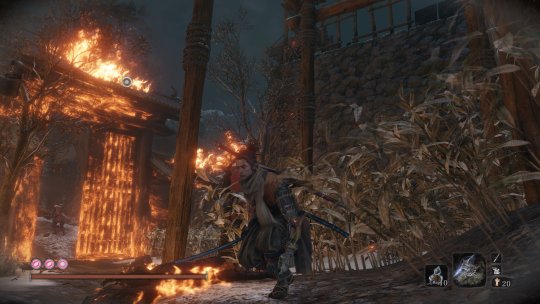
So my fiancé and I are doing this thing where we’ve started buying one copy of a game so we’d both own it together and go through it together. Sekiro and Man of Medan were two of those games this year.
Sekiro isn’t really like Souls. Eventually you’ll come to learn that very quickly when the game throws a boss at you and if you try to play like Souls, you’re not going to get the job done. It will show you that you never learned how to parry properly and you’re going to have to go back and learn it. Or if you didn’t grab a prosthetic that will make the job easier, you’re gonna have to do that too.
The game is interesting in that you aren’t exactly whittling down health bars all the time; you’re striking properly so you can overwhelm their posture bars, find an opening, and go in for the kill. Enemy health bars are essentially secondary to that posture bar. You have your own posture bar so you’ve got to learn how to parry properly. Sometimes you need to parry complete combos in order to deliver posture damage back to an enemy. It’s all about getting into the flow and rhythm of combat. And you must beat bosses in order for you to get a stat boost, so being able to beat a boss lies in your skill, and not necessarily your level/equipment.
Sekiro is Souls-like in its storytelling and worldbuilding. You can run around rooftops and areas to find secrets off the beaten path. You go back and forth between areas and speak to different NPCs to find out their backstories. The plot is also told via NPC conversations with the main characters. At first it’s a little dry but the story opens up eventually. It also has some great voiced NPCs for quests (one quest in particular had voicework that made me feel so sorry for the character that I was like “we need to get the proper item for this guy please don’t make him suffer”).
It feels rewarding to put in the work in order to beat the bosses, make it so you don’t resurrect as often to make people sick, and meet whatever standard Sekiro is throwing at you. It lets the player know that they’ve met that standard, and then throws another boss phase at them so you have to get even better.
Owl I’m looking at you.
Super Kirby Clash
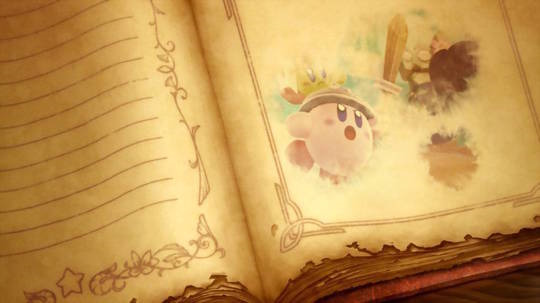
My fiancé and I bought a Switch together this year (which, outside of dinner and movies and clothes, etc. was one of our major purchases together). We downloaded a few demos to try the control scheme out, including Super Kirby Clash. I am aware that this game is probably old, but hey it’s still going and it’s still being supported and I’m catching up.
I’m probably putting it here due to bias, but I think It’s really cute and the hats are super-adorable. I love getting new hats and new weapons for my little Kirby. It’s fairly standard as far as a “mobile experience” is concerned and playing it a little when I have the time to and hacking away at it little by little is rewarding when I get a new hat or new gear. My fiancé and I played it in multiplayer as well, which felt a lot like Kirby’s Return to Dream Land.
It’s pretty inoffensive and I haven’t paid real-life money for anything in it, and I still feel like I’m progressing. So as a Kirby game with light RPG elements (ie: something I’ve wanted for years and years), it’s nice to finally see realised.
Monster Boy and the Cursed Kingdom

An artist I commission very often from convinced me to move this game further up in queue than I originally had it when we were talking about games we were playing after finishing Shadowbringers’ main campaign.
Monster Boy and the Cursed Kingdom is the spiritual successor inspired by Wonder Boy III, with the formula being modernized for a new era. It feels fast, and it looks soooooooo pretty. The tracks are bumpin’ too. It’s also a little tough but with every difficult section successfully platformed through, you feel really good about it.
You play as a plucky boy named Jin whose uncle is an insano who turns everyone in the kingdom into animals. After you experience sweet freedom as a human boy platforming across things easily for like 15 minutes, Jin’s uncle turns him into a pig. Whoops. From there the platforming gets a little harder and you need to learn how to manipulate different forms and different spells in order to get across various sections.
Different animal forms give you different skills. Pig form allows you to sniff out secrets literally, snake form lets you cling to walls and go through tiny passages, frog has a sticky tongue for swinging, and lion form lets you go through obstacles. You need to use these forms well to platform well enough to get through each area and finish the game. Being successful at platforming in this game feels good and fulfilling and satisfying. As you unlock more, platforming experiences get more and more complex with more obstacles put in your way, so in essence it feels like the opposite of a standard metroidvania. Playing both Bloodstained and this in one year felt like playing polar opposites. That said, the checkpointing in Monster Boy is really good. Game Atelier knew what they were doing.
The bosses by contrast were really easy and it’s nice to take the time to look at the art for each boss. All of the effects are also super-nice. Playing Monster Boy on a 4K TV is quite a visual treat for its boss sections, its town section, and its platforming sections. The colours are off-the-charts. Each animal sprite has its own set of unique animations: the piggy farts and looks like >_>, froggy looking at flies, etc. And the music is so good. If this game were a 2019 game I’d definitely put its soundtrack on my list, but it isn’t. It’s a nice blend of new and old stuff and it’s a delight to hear in-context as encouragement to keep going when you fail a platforming section.
Monster Boy and the Cursed Kingdom is a faithful representation and homage of the old Wonder Boy games. It’s filled with references and secrets and awesome art, and I’m glad to have been convinced to move it up my queue for this year.
Most Disappointing Game: Final Fantasy XIV: Shadowbringers
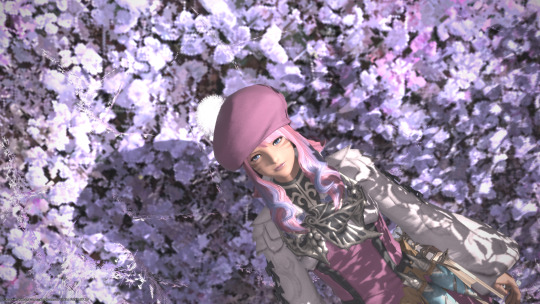
I love Final Fantasy XIV. It’s brought me closer to so many people in recent years and I’ve met so many more through it. Playing this game means so much to me and I want the best for it for years to come. It’s one of the reasons why I’m so critical about it. If I hated this game, I would stop playing and honestly, I wouldn’t care about its future. I will say this before getting started: I like Shadowbringers’ story so far (we aren’t going to be finished with its story until 5.3). I don’t think It’s necessarily as consistent as Heavensward, but I think Shadowbringers’ story is the most Final Fantasy story we’ve gotten since perhaps FF10. Truly, it’s the best we’ve seen for the series this decade.
I had a lot of hopes and hype for Shadowbringers. I hated Stormblood, for a myriad of reasons: social reasons, gameplay reasons, and narrative reasons. The direction Shadowbringers was going and all the trailers made it seem like it was going to be fresh and exciting and new. My fiancé and I (and a few others) swapped servers+data centers in advance of the expansion for a fresh start, to boot. I watched the Job Actions trailer over and over and tried to decide what I was going to eventually main and gear up because I didn’t really have a main in Stormblood due to the combat changes and how easy things became for certain things.
During a live letter, they mentioned that they’re changing how things work in battle, and that’s when I became a little cautious. I was hoping for the best leading up to release and then I saw the scholar/healer changes and got very worried. I changed mains in Stormblood because playing Scholar was freaking horrible at the start of Stormblood.
I eventually had to change mains at the start of Shadowbringers because I was not having fun playing Scholar. For people who didn’t bother to level a healer at all, the writing was on the wall for healers during Stormblood. Essentially, it introduced an age of healing where you barely ever used your GCDs to heal. You mostly used OGCDs and preplanned shields. 90% of the time if you wanted to be a good healer, you’d mostly DPS. I don’t think I’ve cast a GCD heal at all in SB and ShB content unless things were going super-wrong.
The healing changes introduced in Shadowbringers made us think that things were going to change, that things were going to be harder to heal. I had my doubts, however, because all fights are scripted and if they were to introduce a substantial change to incoming damage, they would have to make it so most people (casual, midcore, hardcore, less experienced newbies, experienced folks) would be used to It and could handle it. There was no way they were going to introduce more difficulty given that subscription numbers were increasing.
And so, healers during Shadowbringers got some damage skills taken away, but in their place, they were given more tools to heal with:
- White Mage came away from this as a very well-rounded healer at launch. It had its damage spells, it had a damage spell with a stun, it finally had long-standing and easily useable mitigation, it has substantial MP recovery, and it has a damage spell that rewards you for using three GCD heals to make up for damage lost. White Mage still making out like a bandit in 5.1.
- Scholar felt dramatically different and didn’t feel as solid as it used to be. It had most of its damage tools taken away, the usefulness of its fairy was decreased because let’s be honest it was super-overpowered, it got one of its fairies and its AoE esuna taken away, and it was given its PvP move to act as an AoE that doesn’t have another effect. I had to completely unlearn everything I did as scholar in the last 5-6 years in order to play current scholar. Current 5.1 scholar is overpowered as heck and I don’t feel as satisfied to play it in SB/ShB content.
- AST LOL. All the cards are balance. MP regen is what. Heals are what. Everything is just what. Other fun skills were removed. That said, I really like AST just because it feels like I have to work twice as hard to achieve the same effect the other healers bring to the table.
So eventually with all of these changes, we had assumed that healing was going to be harder. It wasn’t. It’s the same experience and all we’re doing is pressing one single button all the time. I barely have to heal in dungeons. I barely have to heal in raid unless my party members step in stupid. I just can’t bring myself to play healer every single day anymore, and I love healing in this game. Or I loved it back when it was more dynamic. I just press one button over and over and over and over and over and maybe sometimes another but I just press one button a lot. It’s really sad and it makes me miss old Cleric Stance of all things.
I like Shadowbringers’ story. I felt rewarded playing through it as someone who’s played the game for years and did everything when it was in-content. So for me, it was like a good reunion. There were a lot of points where the story dragged or felt rocky. I felt like the start of the 5.0 campaign was utterly boring and poorly paced. It picked up again, then slowed down again, then picked up again, then got REALLY BAD, then picked up again for a good finish. I don’t think it’s as consistent as Heavensward’s 3.0 campaign, but it was very solid and made up for the 4.0 campaign.
However, story is only 20% of the experience for me. The rest of the time, I need to actually play the game. I actually liked the levelling and crafting changes and new skills they brought in during 5.0 because leveling a crafter never felt easier. I felt like I still had to work hard but the payoff came quickly and my macros still worked as well as they did from during Stormblood. I also used my Stormblood melds and Stormblood equipment for the entire levelling experience and had to make concessions for some of my macros as time went on. I still had to know what my skills did, basically. The 5.1 crafting/gathering changes kind of make me want to craft less since I don’t feel like I have to solve a puzzle anymore and to be honest, everyone crafts now so you make far less money than you previously did. The desynth changes also made it so that most of my markets tanked since what’s the point of gathering half the materials when desynth makes those materials easily accessible. I’m not saying to gatekeep at all, but I feel like the experience should have been a little harder (ie: like the Ixali experience where you had to learn what your skills did or desynth shouldn’t be this easy to keep the market fairly balanced). My server is a crafting server so I am more impacted in general from this. That said, I don’t have anything to spend gil on so it doesn’t matter, I guess. I just feel far less inclined to participate in what was one of my favourite pastimes in XIV.
I mained Ninja which got killed in 5.0. I was already dealing with the servers moving from East Coast to West Coast, so adding a bunch of stuff to squeeze into your TA window in 10 seconds in Shadowbringers utterly killed the job for me. 5.1 Ninja throws me off as someone who played this game since the time Ninja was introduced, and I can’t make myself play it. The current opener is the Doton opener (which is something I didn’t like in SB at all) and I can’t always rely on my tank to bring the thing to my Doton. That, and making it so you do different things per every other or every third TA just makes the job a little unpalatable for me at 80. I’m one of those people who wants TA to go. I don’t like that Ninja’s become the TA bot in recent years. I can still do well with it. People still throw buffs at me, but I don’t find enjoyment in the job anymore and I hope we get a proper retool in 6.0.
I switched back to ranged. Thankfully Bard hasn’t changed as much since SB (though I still prefer HW Bard like a weirdo), and Dancer is one of those “I worked too damn long today and I just wanna do the mindless brainless rotation” jobs. I miss old Machinist oddly enough. It felt really good when you played it well and pulled off a decent wildfire. Now it’s a little easier and I don’t feel as fulfilled playing it. That said, it’s probably the best incarnation of the job since it’s sad little introduction in 3.0.
Even tanking is substantially easier and that’s a mostly good thing. It sucked going into a low level dungeon and having trouble keeping aggro due to the level syncing and your DPS’ stats. Now you can just turn your stance on and go to town without losing any damage potency like you used to. I kind of miss swapping stances after I’ve established aggro though, because you could tell the difference between a good tank and a bad/less practiced tank if they didn’t bother to swap stances in a fight. Tanks came out of this expansion very balanced, though. They might need some work here and there (warrior I’m looking at you), but overall, they came out the best out of the three roles.
Other than that, you have monks not knowing what they should be, samurai continuously getting buffed and nerfed, black mage staying consistent, red mage being lol, summoner getting changed to the point where now it’s overpowered, among other DPS changes. DPS overall don’t have as much synergy so you can take any job you want to into raid and it’ll get the job done. That said if you want to do as much damage as possible, you’re generally going to take the same few classes into the raid if you’re less educated about them. And I feel like the lack of synergy or utility between classes or even the loss of something like mana shift makes the whole experience a little boring. It’s very “f you, I got mine” or the onus is on the player for their own personal burdens and no one’s really helping each other unless you’re a dancer, trick attack bot, dragoon or bard.
I really hope the other pieces of content are substantial but what I’ve seen aren’t exactly what I had in mind. Boss refights with an alternate version is really neat but I didn’t really want that for this raid tier. I wanted something more original given what we had to deal with in Omega. I don’t really care for the Nier Automata crossover because, again, I wanted something original to the XIV lore and the First. I think doubling down on Blue Mage is a bad idea and while some folks like its party-based content now, I can’t bring myself to keep doing the content given that it’s clear they don’t know what to do with it (or didn’t know what to do with it). With one dungeon coming per patch I have to question what’s happening internally or what they’re working on. I know SE is weird internally and I really hope that the kind of stuff I’ve read in previous postmortem articles isn’t happening.
Either way, I’m really disappointed that I want to stop playing XIV so much when it’s the most popular among my friends and followers because it’s so dissatisfying to me and it’s the most accessible that it’s ever been. I hope things get better eventually but going by what I think they have in store and their old reliable formula, I don’t have hope. I’m tired of the formula and I feel like it needs a shakeup. Overall, I’ve been less happy playing FFXIV than I’ve ever been and it makes me feel really sad.
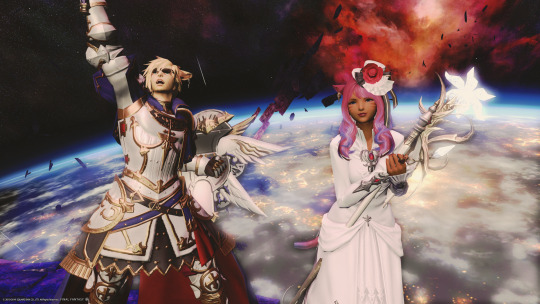
#goty 2019#ciconia when they cry#bloodstained#the touryst#a short hike#worldend syndrome#judgment#cadence of hyrule#spirit hunter death mark#sekiro#super kirby clash#shadowbringers
20 notes
·
View notes
Text
Well I’ve gotten to the end of Xenoblade Chronicles 2 and all that’s left really is the final boss so I reckon I can finally give a proper critique of it that isn’t the usual “hurr durr anime big tits bad lol!” but instead an actual one based on the game itself as a video game. I did this earlier but now I feel more concrete on things and have seen this adventure through more or less all the way and just have one giant robot to kill left.
First of all, I’ll get this point across now since its the basis for all of the points on the game. Xenoblade Chronicles 2 is dragged down to the very depths of the ocean by two who mechanics that utterly ruin the game beyond repair for me. Field Skills and Blades. These both feed into each other constantly throughout the game and only serve to restrict and hinder the player at every possible. Field Skills are skills your different Blades posses which allow them to do certain actions in the world. Other than increasing materials drop rates, Field Skills are one of the single most intrusive and immersion breaking game mechanics that could possibly be conceived of. Put bluntly, they are used to roadblock progression and grind it to a screeching halt. Even story segments require them to progress further. Field Skills require specific grinding to be undertaken in order to level them up, and since they’re locked behind affinity levels, which can in turn only be gotten through completing a specific sidequest, heart to heart, or increasing trust, they too are locked behind a secondary layer of grinding. Add in that all Blades except story Blades are randomised as to which ones you get and you have a system that is designed to force you to grind.
Even the Blades themselves are often not enough to overcome Field Skill checks, requiring multiple with the same skill to stack the effect to get it high enough, or multiple skills in one check, requiring more and more grinding both to get a random chance at the Blade you need, and then to level them up enough to use the Field skill. In fact, most sidequests related to getting Blades’ affinity levels or unlocking higher level Field Skills also require higher level Field skills to get through, and thus even more grinding.
Fundamnentally, that’s all Xenoblade Chronicles 2 is. Grinding.
The actual “fun” gameplay is so often locked behind obligatory roadblocks and forced grinding that the game’s pacing just doesn’t exist at all. It’s a horrendous mess of a system that has you grinding for core crystals, then grinding to level up affinity, the grinding to level up skills, then grinding to complete a sidequest to get those skills higher, and even more grinding for that, and you see where this is going, don’t you? Xenoblade Chronicles 2 is incredibly poorly designed and lazy with how much it forces you to stop doing things naturally and presenting you challenges as you go and instead making you stop everything and go do something boring in a long chain of repetitive motions just to progress. It takes ages and it’s not fun at all.
And that’s not even getting into the combat.
Combat is the weakest it’s ever been. You only have 4 arts now and can only equip 3, so really your options are far more limited compared to the last few games which let you build more diverse and customised movesets. The Blade system is meant to alleviate that, since switching between the 3 you can take into battle seems to add variety, but the fact they’re all tied to roles and characters themselves all function in very clear roles means the Blades become useless if they don’t fit the character’s role. And again, since Blades are randomised, you’ll have to grind, dismiss the ones you don’t want, then keep grinding for more core crystals to get a another shot at rolling for them. Thank god this isnt a lootbox system or else it would’ve been a full on irredeemable gacha game. Combat itself is far slower too, you do less damage overall and take more than you should really, since they ditched armour and just allowed two accessories at a time to be equipped. The AUX core system sort of helps but not by much. Enemies with large health pools take astronomically long to kill and group fights become death sentences if you’re not massively overleveled. Instead of strategy you just brute force your way through the rather complicated mechanics. I didn’t mind the sealing system and it was fun to use and watch but it all ties back into the Blade system which being tied to random chance is tied to grinding and feeds back into the fact that Xenoblade 2 pretty much forces you to grind all the time to get anything done.
The environments are usually the high point of the game. When they get it right, they combine the scale of X and the layouts of the original Xenoblade, but when they get it wrong, the enemy placements, means of navigation, or the oversaturation of Field Skill roadblocks really ruin some of the experience. I feel nowhere is this best exemplified than in Tantal where there’s so many twists and turns, so much to explore and discover, so much well put together level design that it was a real shame that parts of it were locked behind more discouraging Field Skill checks. Field Skills just really ruin this game so much, instead of encouraging the player to engage with a piece of content, it does the opposite by throwing big number requirements in their face and reminding them of the Blades they just don’t have. Sidequests get ignored and you don’t want to do them because you know you’ll have to grind to be able to engage with them. Exploration is discouraged because your reward for a keen eye and curiosity as well as some clever platforming is to be slapped with a big “stop” sign in the form of another field skill check. The main story areas do this too and really kill the pacing of the engagement with that too.
The story itself isnt’ bad, not great but it’s better than X at least. It takes awhile to really get properly going but in the later parts and towards the end it properly picks up and delivers character moments, conflicts in some decent ways. It does wait until the last chapter to actually connect itself properly to the original Xenoblade but at least it did. It’s not quite as strong a tale as its predecessor but it’s alright for what it’s worth.
Boss design is awful after chapter 1, all the fights try to use some form of gimmick but rarely explain it very well or present it clearly so you’re left often not sure how to counter it or what you’re doing wrong and usually get punished by some huge one hit kill move you have no way of preventing or blocking. Some fights have very specific things you need to do to win and how you approach it but devising those strategies does not come very naturally and is born of out of frustrating trial and error rather than actual strategy or nods from the game itself. Or you know, just grinding until you massively outlevel everything you’re fighting so you don’t die every minute. (Looking at you especially, Phantasm.)
On the whole Xenoblade Chronicles 2 has all the systems, tools, and elements needed to be a great game, but thanks to just a few mechanics and their implementation, making everything ultimately feed back into Blades and Field Skills, it just becomes a restrictive, unpleasant mess that bogs you down with constant grinding, frustrating roadblocks, and unfair design. With just a few tweaks, such as getting rid of Field Skills and maybe making the rare Blades non-randomised, the whole game would’ve been alot better for it. The restrictive combat woud’ve been more engaging and tight if you had the freedom to try out new Blades more often without fear of rolling the wrong one and needing to grind all over again, and not having the exploration, sidequests and even story progression be locked behind an incredibly intrusive roadblock system that necessitated further grinding.
That said, there’s this bit where you fight a nopon piloting an anime chibi maid gundam death mech and its honestly more hardcore than it has any right to be.
Oh yeah and the voice acting is god tier because "THINK YOU CAN TAKE ME!?” is the best thing I’ve ever had screamed at me over and over by Scottish people.
I give Xenoblade Chronicles 2 a Field Skill/10
#long story short field skills and the way blades were handled ruined the whole game#which is honestly a fucking achievement in a way that just two things can feed back so often into everything#and ruin the whole experience so thoroughly on a gameplay mechanical level
4 notes
·
View notes
Text
Life After Re:Mind: A Personal Post-Mortem on Kingdom Hearts III
I’ve been on the Kingdom Hearts roller coaster for almost its entire run. For the uninitiated, that’s about 18 years, approximately eight games across five different platforms (not even counting all the re-releases), technically a movie, and an ongoing mobile game’s worth of my gaming dedicated to this one franchise. The iconic, almost infamous Disney x Square Enix mashup has certainly made its mark on the industry in its long history, and its most recent entry—Kingdom Hearts III—stood out as a highly-anticipated title with 13 years of build-up and six years of development.
While the state of its completion upon launch was rather questionable, a DLC add-on was rolled out almost a year later to fill in some of the gaps. Re:Mind was released on January 23 as a supplemental story that sought to provide further insight into the narrative and paint a more complete picture. It even added some new content and playable elements to boot.
For all intents and purposes, Re:Mind brings the story of KH3 to a close. But how well does it do that? Rather than simply review the DLC, I’d like to take a deep dive (pun intended) into how complete the game feels now. As a hopelessly-devoted Kingdom Hearts fan who wanted so much more out of KH3 initially, I went into Re:Mind hoping for the package to be more substantial. In many ways, Re:Mind delivers on its promise of a fuller experience. But from what I’ve played thus far, I’m still not very confident in saying that the game as a whole is in any way perfect.
But before we even get to Re:Mind, I should talk about my thoughts on the base game. After about a year of careful consideration, my reaction is lukewarm at best.
**MAJOR SPOILERS FOR KINGDOM HEARTS III BELOW**
I have to admit that those first couple of hours were magical. With so many installments touting completely different play styles, KH3 had a strong start. It began as a return to form for the franchise, combining its classic action-RPG gameplay with some of the best mechanics from other games in the series. I felt that my patience, tenuous as it was, was rewarded with a gameplay experience that was both nostalgic and refreshing.
But when that initial charm wore off and the game progressed, it started to take a bit of a nose dive. Its enormous worlds had almost nothing in them and the dazzling gameplay became so broken that I don’t think I got a Game Over throughout the entire story. Not to mention there were fan favorite characters that saw little to no spotlight, and the conclusion to the long-running Xehanort Saga that director Tetsuya Nomura promised us left more questions than answers.
I won’t say I hated it. Seeing characters like Terra, Roxas, and Xion make a comeback during the climax was so emotionally gratifying that I can barely think about those scenes without crying. With so many characters having been resigned to grim fates throughout the series, it was all too satisfying to see some happy endings go around. But even then, it was missing far too much to be among my favorite Kingdom Hearts games.
If you compare it to any other title in the franchise content-wise, KH3 was a barebones and almost empty affair that left much to be desired. The final chapter proved to be lackluster with its shockingly unchallenging clip show of bosses from games past and a last world that was barely explorable. And the bittersweet cherry on top came as Sora disappeared by the end of the Keyblade War while his friends were alive and well, an ending that was far too hard to swallow for a story that has long deserved a real and honest conclusion.
Re:Mind, in its entirety,sought to change at least some of this. This three-part DLC package (three parts that I know of, at least) promised to deliver more playable characters, a deeper insight into the story, more real gameplay challenges, and a glimpse into the future of Kingdom Hearts. I’ve played and struggled through the first two (Re:Mind and Limited Cut), and am currently working on conquering the third (Secret Episode). But I have plenty to say on the matter already.
I’ll go in order, starting with Re:Mind itself. As a retelling of the final chapter, this first episode went into further detail on Sora’s journey to rescue Kairi’s heart after she perished by Xehanort’s hand. His own heart traveled back through time to collect pieces of Kairi, passing through every Keyblade wielder during their final respective battles, which lent itself to allowing the player to take control of different characters and use their abilities.
This was, without a doubt, my favorite part of the DLC. It gave me everything I wanted out of the conclusion of KH3. It wasn’t difficult to get used to any of the new characters (gameplay translates rather consistently between each of them), but it was so exciting to have some of my favorites take an active part in the final conflict and truly helped to raise the emotional impact of their returns.
The big team-up between every Keyblade Master and Mickey Mouse’s unyielding efforts to fight back the darkness with his dwindling strength easily served as some of the most powerful gameplay moments in the entire series. It gave me the same kind of vibes I would get from watching epic anime battles ala Gurren Lagann or My Hero Academia. Characters from across the series overcame severe hardships in order to arrive at one last fight against Xehanort, which resulted in an immensely satisfying conclusion for the supporting cast.
What made this first part work was how it directly addressed some of the flaws of KH3’s denouement. While working its way into the main story, it was able to course correct much of the narrative payoff it tried to achieve the first time around. It was more than just Sora, Donald, and Goofy fighting one more evil person. It gave everyone a chance to shine and allowed its fans to be directly involved in seeing their stories through. Is it a perfect game after Re:Mind’s first chapter? Far from it. Do I lament that this content wasn’t available at launch? You bet I do. But Re:Mind itself was exactly the climax I wanted one year ago, and getting it now certainly counts for something in my book.
The same can hardly be said for what comes after.
Upon completing Re:Mind, you unlock the Limited Cut. Taking place one year after the main story, Riku and company have worked tirelessly trying to track down Sora with nothing to show for it. While trying to compare notes with Radiant Garden’s crew of Final Fantasy characters, they discover a strange collection of old Organization XIII data, and compile a digitized version of Sora to investigate it. This results in a gauntlet of bosses that pits you against beefed-up versions of the Organization members. And these fights are substantially more difficult than anything that the base game had to offer.
This could’ve been a good thing. One of the major complaints I had with the initial KH3 release was that you could very easily unlock combat abilities that were nigh-invincible and easily tore through any enemy the game threw at you, even final bosses and secret enemies. By and large, these new bosses offered no such luxury.
Reminiscent of KH2:FM, each Organization member required their own strategy and featured original gimmicks that you had to overcome. Almost none were so simple as “mashing the X button so you could press the Triangle button so you can mash X better.” This collection of newer bosses would’ve been nice to add as a secret room where you could test your abilities, and I certainly felt like a champion conquering them one by one. But it fails when you include it as a linchpin to the rest of the story.
Limited Cut presents itself as a legitimate continuation of Kingdom Hearts. In other words, surmounting this glut of superbosses was a requirement in order to know the rest of the story. That isn’t how superbosses should work. I enjoy being challenged with sidequests and extra content in any Kingdom Hearts game, but not when it serves as a barrier barring me from actual narrative. In the past, secret bosses were optional challenges that you could take on, where you’d be rewarded with extra scenes if you beat them. What came after Limited Cut hardly felt worth it. There were cutscenes to be had and I did learn something new in terms of what Riku must do to save Sora, but having to tear my hair out through several difficult bosses just for that one fact was the furthest thing from a fair tradeoff.
In fairness, that wasn’t all I got from beating Limited Cut. It granted me access to the Secret Episode, but that’s an entirely different beast as of now.
As the episode begins, we miraculously find Sora alive and well, albeit stranded in the Final World. He soon encounters a mysterious young man named Yozora (who you might remember from the Toy Box gag commercial and the original secret ending). Strangely enough, Yozora had been asked to “save Sora,” though his version of it seemed to involve drawing his weapon against him. So ensues one of the toughest, almost confusing boss battles I’ve ever encountered in Kingdom Hearts.
As of writing, I still have yet to defeat Yozora. I hope to do so soon just to see if anything comes after. If the secret content of previous games is any indication, it probably won’t be too much, but the potential of narrative compels me to see it through to the end. And that simply compounds the problem that the content after the main story seems to have.
There’s a stark difference between beating a regular boss to further the story and beating secret bosses to further the story. This unrelenting test of my skills feels more like a requirement for my KH3 experience rather than just a side challenge. The sense of accomplishment I might get from overcoming these enemies is diminished when you replace hidden content with vague and mandatory narrative as a reward. Of course I want to know more about what’s happening in the story, but having to work this hard for it has proven to be rather unappetizing.
The way I see it, the entire DLC package of Re:Mind worked at its best when it played into the game it’s attached to. The first chapter doesn’t fix all of the base game’s problems, but I found a much greater sense of gratification in seeing characters I’ve followed for years get a redo for their long-deserved epic comebacks. Unfortunately, it began to lose me as soon as the DLC started to stray away from the core experience.
As I mentioned before, Tetsuya Nomura promised us an ending to this saga of the Kingdom Hearts story. Even if the series continues from here, as it undoubtedly will, I still wanted that one decisive ending before moving on. I didn’t get it the first time around, what with the ambiguous final scene and two secret endings in the base game. Limited Cut and Secret Episode brought me even further from it, while kicking my ass to boot.
I wasn’t so naive as to think that Kingdom Hearts was ever going to end. The whole reason why I got the DLC in the first place was because I wanted more of it. When all's said and done, Re:Mind reflected my initial experience with Kingdom Hearts III. The first few moments dazzled me, but despite its best efforts and toughest challenges, there still remains so much more that could be done to salvage this game in its current, seemingly final, iteration.
Have you beaten Re:Mind yet? Which secret boss gave you the most trouble? Let us know in the comments!
----
Carlos is a freelance features writer for Crunchyroll. Their favorite genres range from magical girls to over-the-top robot action, yet their favorite characters are always the obscure ones. Check out some of their satirical work on The Hard Times.
Do you love writing? Do you love anime? If you have an idea for a features story, pitch it to Crunchyroll Features!
0 notes